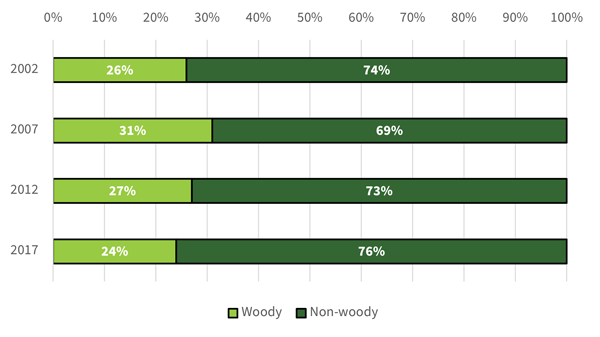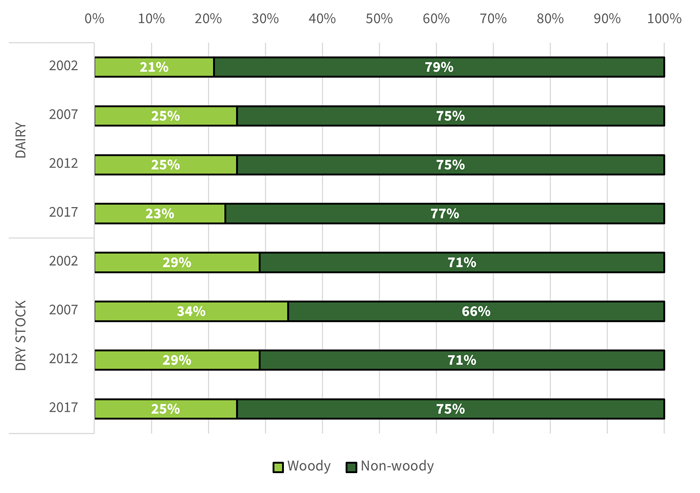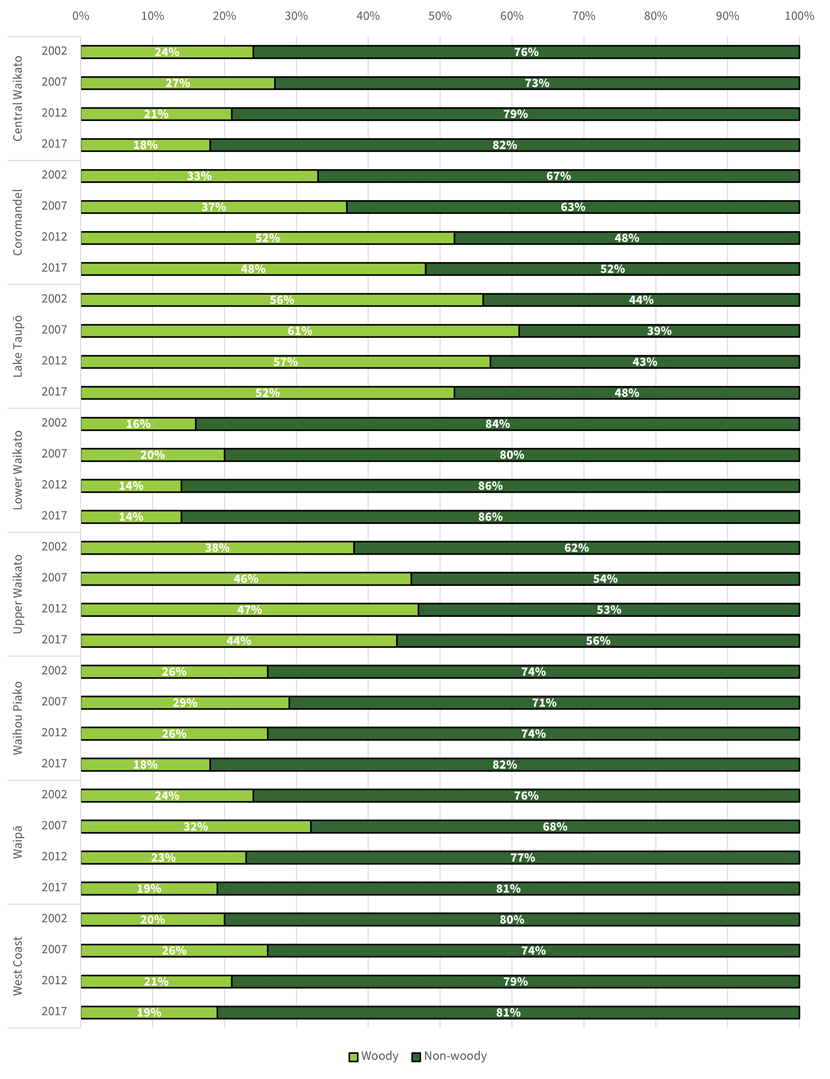Why we monitor stream bank vegetation
The demands on the region’s rivers and streams continue to increase as the result of land use intensification. The long-term management of these resources is a high priority to ensure freshwater quality and aquatic biodiversity within the Waikato region are preserved for future generations. Riparian management techniques such as fencing, and planting of riparian zones are an effective way of improving water quality and increasing aquatic and terrestrial biodiversity.
Waikato Regional Council monitors stream bank vegetation to quantify what proportion of the region’s riparian margins requires further stream bank vegetation planting.
The regional riparian characteristics survey provides a repeatable and quantitative assessment of riparian fencing, vegetation, and stream bank erosion through pastoral land in the Waikato region. In addition to supporting catchment management zone works the survey information potentially supports our biodiversity, biosecurity, and environmental education strategies and programmes.
The survey provides a benchmark on stream bank vegetation and, through ongoing monitoring, can provide a gauge of the effectiveness of Waikato Regional Council’s riparian policies.
What's happening?
Riparian vegetation has been surveyed along 500 m lengths of waterways (432 sites were sampled in 2017) and the vegetation classified into woody and non-woody vegetation.
The stream bank vegetation indicator shows:
- The amount of woody vegetation (as a proportion of bank length fenced) across the region has not changed significantly over the 2002-2017 period (26% in 2002 and 24% in 2012).
- In 2017, There was no difference in the proportion of bank length occupied by woody vegetation between dairy and drystock land use.
- While woody vegetation is comprised predominantly of exotic species, the proportion of bank length with woody native vegetation has significantly increased from 6% in 2002 to 10% in 2017. The non-woody vegetation is predominantly comprised of pastoral grass cover.
- Survey results suggest that there is a positive association between effective fencing and woody vegetation (i.e. effectively fenced bank length has a higher proportion of woody vegetation than bank length that is not effectively fenced).
How we monitor
Data and trends
Download the data file
The Excel spreadsheet below contains the source data to this indicator's graphs and any additional data. The data were collected in 2002, 2007, 2012 and 2017.
For more information, read the full technical report relating to the 2017 survey.
When this indicator is updated
The indicator is updated every five years. Data has been collected in 2002, 2007, 2012 and 2017 to coincide with Dairying and Clean Streams Accord targets.
Preparations for the next regional riparian characteristics survey, including any refinements to the survey method and design, will get underway in 2021/22. Data collection for the next survey is due to be undertaken during the summer/autumn period of 2022/23.









To ask for help or report a problem, contact us
Tell us how we can improve the information on this page. (optional)